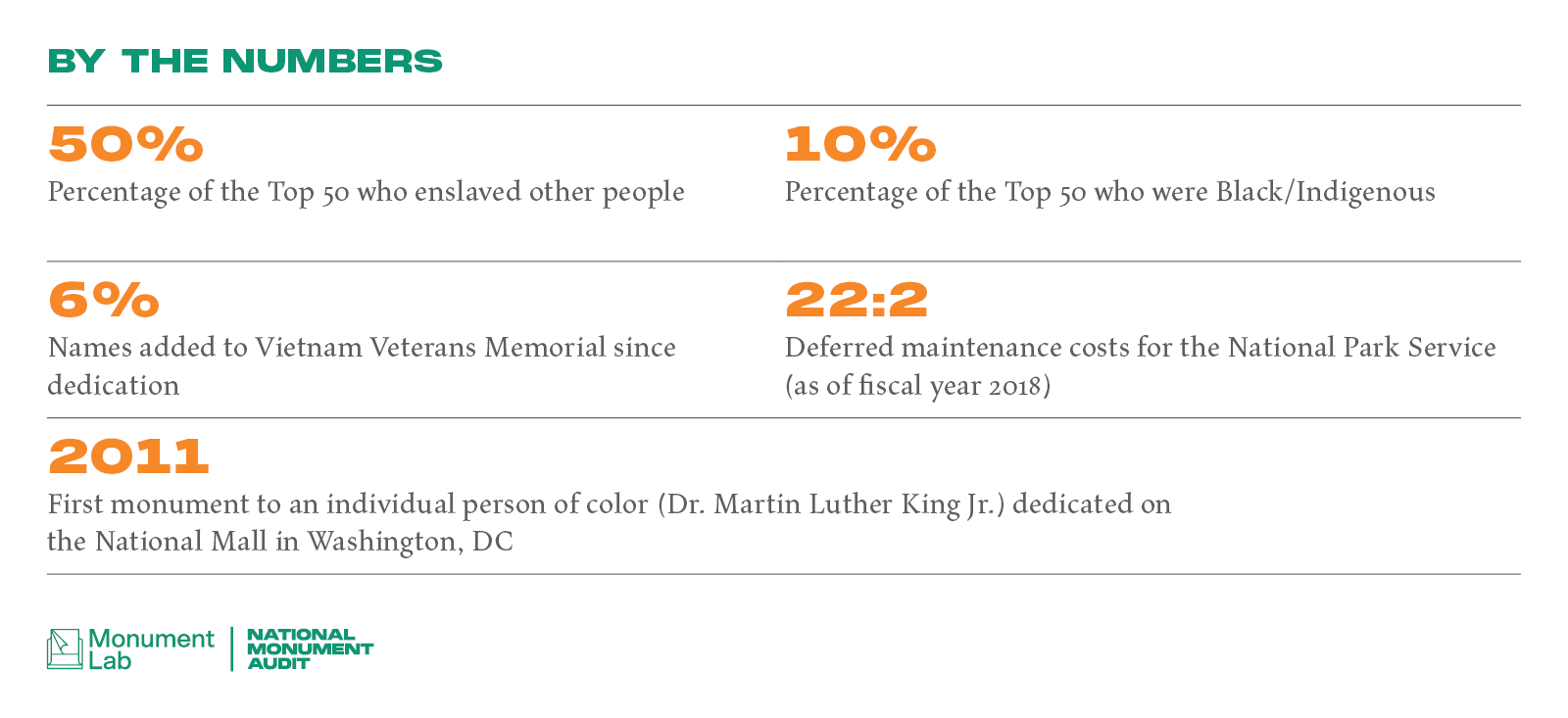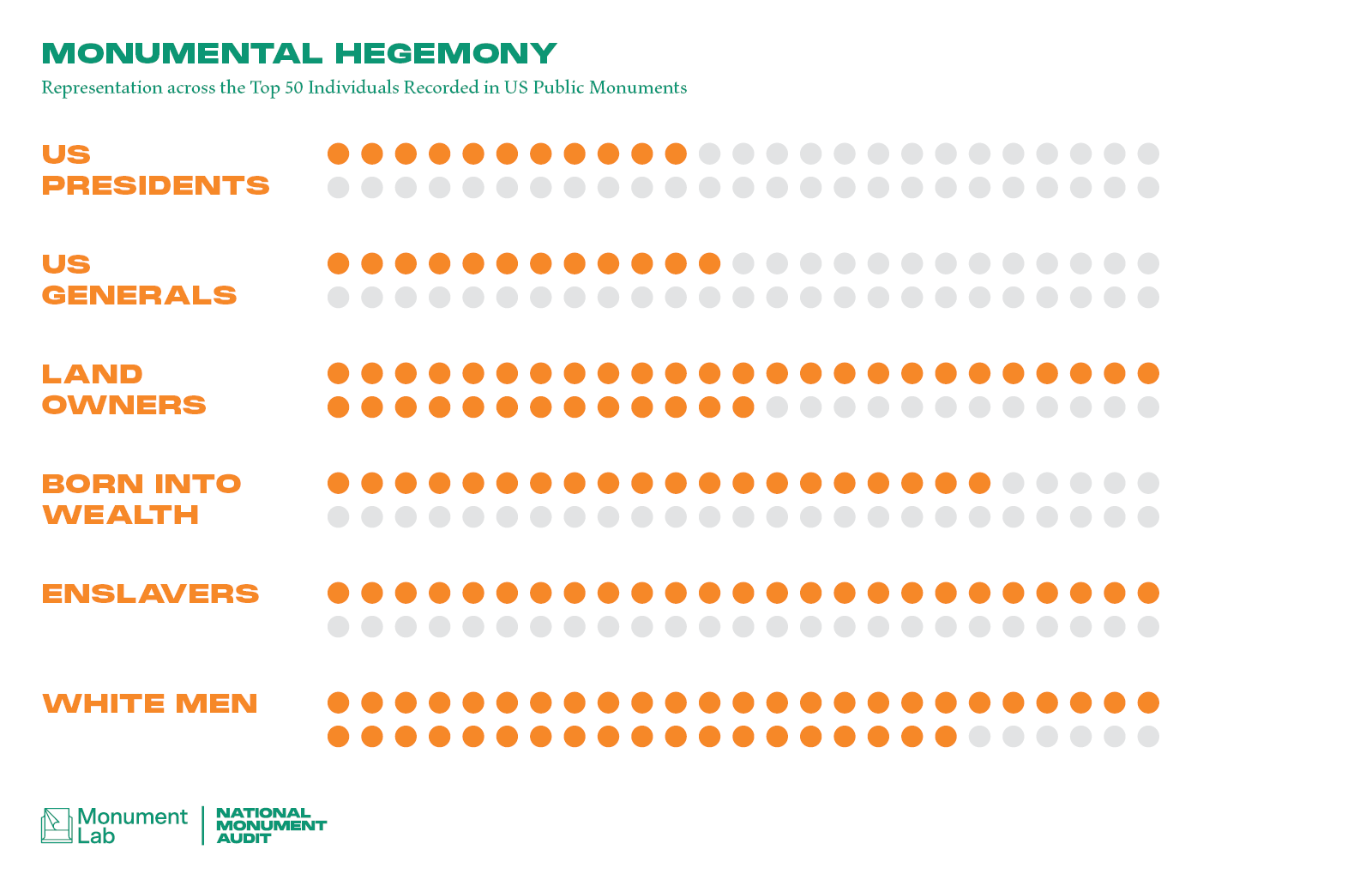The commemorative landscape is dominated by monuments to figures who would be considered white, male, and wealthy in our common understandings today.
The Top 50 represented individuals in our data set include eleven US presidents and twelve US generals. Half of the Top 50 list (50%) enslaved other people. More than a third (40%) were born into family wealth. A large majority (76%) owned land.1
Only five of the Top 50 figures were Black/Indigenous: Martin Luther King Jr. (ranked 4th), Harriet Tubman (ranked 24th), Tecumseh (ranked 25th), Sacagawea (ranked 28th), and Frederick Douglass (ranked 29th). There are no US-born Latinx, Asian, Pacific Islander, or self-identified LGBTQ+ people in the Top 50 list.
Our study finds that monuments to historical men grossly outnumber those to historical women. Joan of Arc, Harriet Tubman, and Sacagawea are the only women represented in the Top 50 list. Beyond the top individuals, we investigated the top 15 individual women in the nation’s commemorative landscape. Three are European (Joan of Arc, Marie Curie, Queen Isabella) and three are saints (Joan of Arc, Elizabeth Ann Seton, Kateri Tekakwitha). Feminized bodies often appear in the sanctioned monument landscape as fictional, mythological, and allegorical figures. For example, within our study set, there are more recorded monuments depicting mermaids (22) than there are monuments to US congresswomen (just two: Barbara Jordan of Texas and Millicent Fenwick of New Jersey).
Ongoing discussions and actions related to the evolving monument landscape could respond to this misrepresentation with more diverse monuments to individuals/groups as well as responses to the long-standing suppression of a more representative understanding of public memory.
1. Family wealth assessed from biographical information drawn from Wikidata. Land ownership assessed from census records, estate records, biographical information drawn from WikiData and Ancestry.com data.
CALL TO ACTION
Support a profound shift in representation to better acknowledge the complexity and multiplicity of this country’s history.


